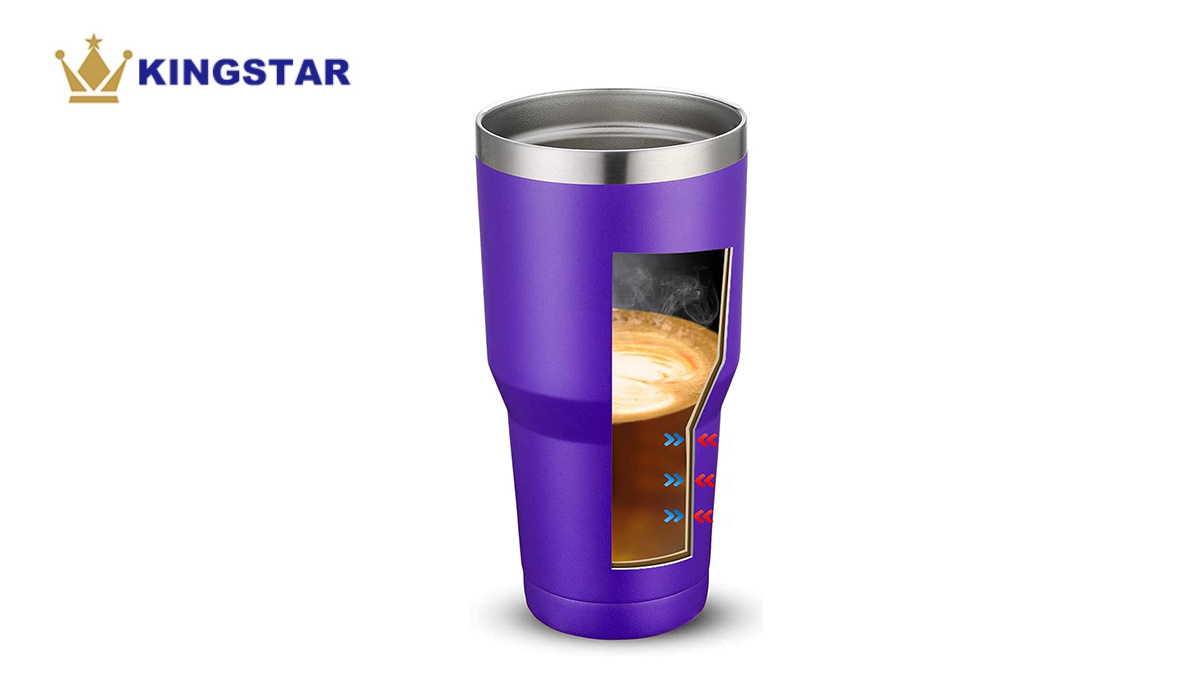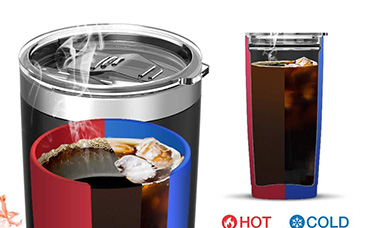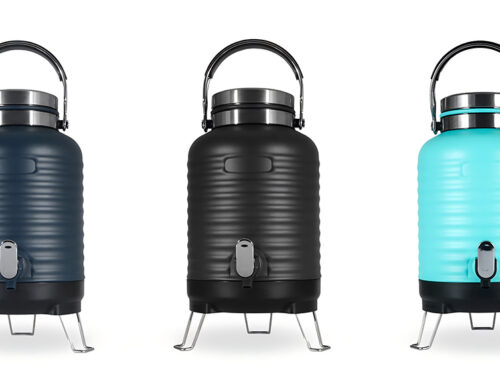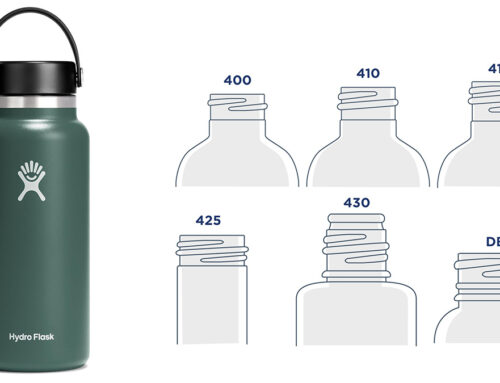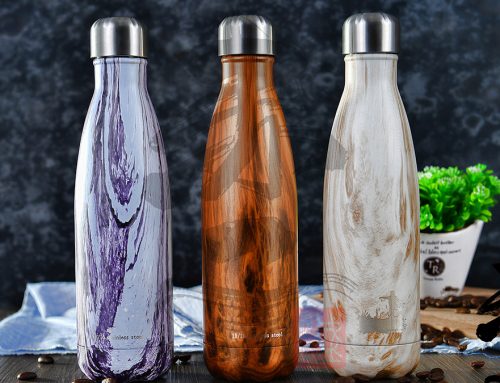The thermos cup adopts a double-layer stainless steel structure, and vacuum technology is used to extract the air between the two walls of stainless steel to prevent heat transfer and convection. Moreover, the copper-plated layer on the outside of the inner wall can make it mirror reflection, reflect the radiation back.
The degree of vacuum directly determines the insulation effect of the vacuum flask. Generally speaking, the smaller the value of the vacuum degree, the less air remains between the two walls of the insulated cup, and the better its ability to insulate heat. Conversely, the larger the value of the vacuum degree, the more air remains between the two walls of the thermos cup, and the worse its ability to insulate heat.
1. What is Vacuum Degree
The degree of vacuum refers to the degree of gas rarefaction in a vacuum state. For the identification of vacuum degree, it is usually marked with “absolute pressure” and “absolute vacuum degree” (that is, how much pressure is higher than “theoretical vacuum”);
In actual conditions, the absolute pressure value of the vacuum pump is between 0 and 101.325KPa. The absolute pressure value needs to be measured with an absolute pressure meter. At 20°C and altitude=0, the initial value of the meter (absolute vacuum meter) used to measure vacuum is 101.325KPa (that is, a standard atmospheric pressure).
2. What Equipment is Used to Achieve the Vacuum of Vacuum Flasks?
The answer is, oil diffusion vacuum pump + rotary vane pump vacuum machine
In the vacuum insulated cup manufacturing industry, diffusion pump is one of the most extensive and most important tools for obtaining high vacuum, usually referred to as oil diffusion pump. The diffusion pump is a secondary pump, which requires a mechanical pump as the backing pump.
3. Why the KingStar Vacuum Flask Has a Better Heat Preservation Effect
- KingStar’s vacuum pump is jointly developed by KingStar and the vacuum pump supplier. It can achieve a smaller vacuum degree and a more stable vacuum performance.
- KingStar ensures that the vacuum degree of the vacuum flask is lower than 5E-3Pa when it is sealed, that is, it is sealed when the vacuum reaches this vacuum degree.
- The key is that KingStar uses a special getter during the vacuum process. A piece of getter is placed between the inner and outer walls of the KingStar vacuum flask, and it is activated by heating before sealing. Therefore, after sealing, the pressure in our vacuum flask is still further reduced, and it will remain at -6 to -7 Pa for a long period of time;
4. About Pressure: Unit Conversion
Commonly used vacuum units are Pa, Kpa, Mpa, atmospheric pressure, kilogram (Kg/cm2), mmHg, mbar, bar, PSI, atm, etc. The approximate conversion relationship is as follows:
1MPa=1000KPa
1KPa=1000Pa
1 Standard atmospheric pressure=100KPa=0.1MPa (approximate value, approximate calculation in less demanding occasions, used for rough calculation)
1 Standard atmospheric pressure = 1 kilogram (Kg/cm2) (approximate value, used for rough calculation) = 760mmHg
1 Standard atmospheric pressure = 14.5PSI (approximate value, used for rough calculation)
1KPa=10mbar
1bar=1000mbar
1atm=101325Pa (atm represents a standard atmospheric pressure as a reference quantity)
If you have other questions about custom insulated water bottle manufacturing, please feel free to contact us.

